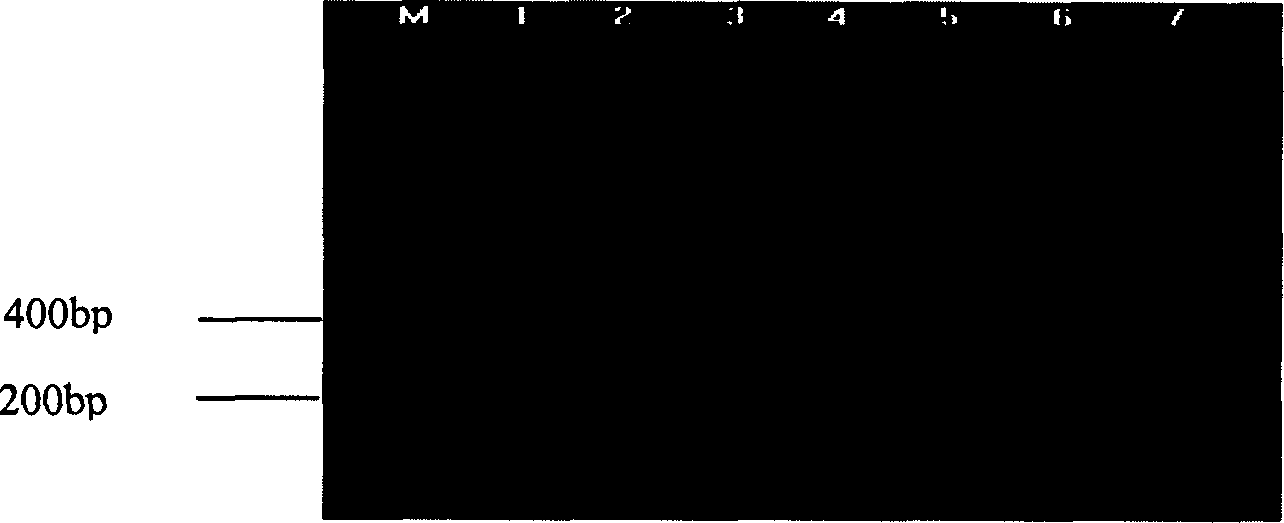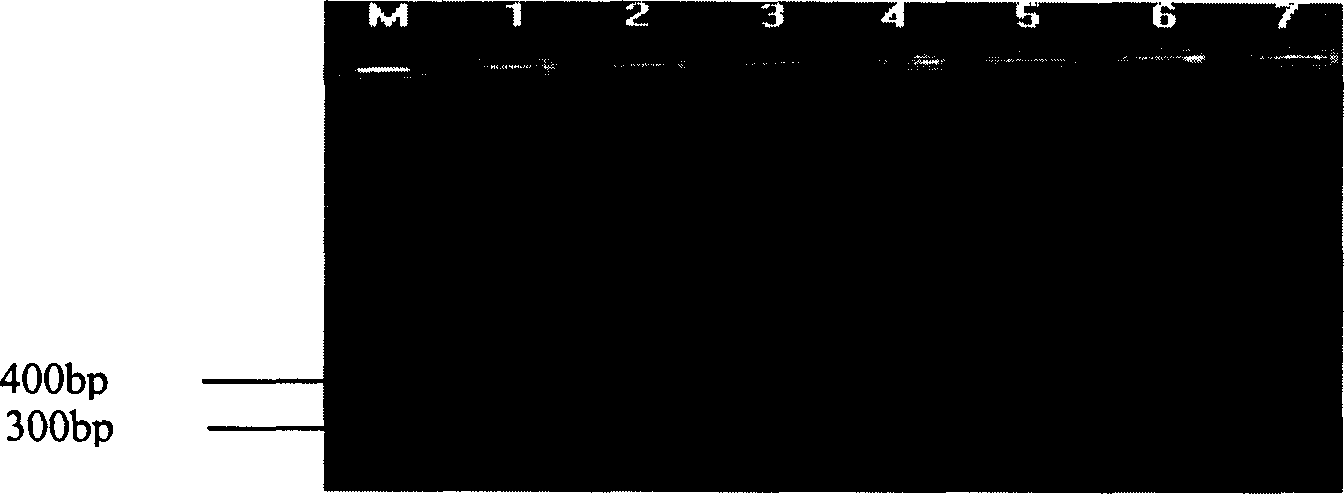Rotavirus RT PCR detecting kit and its detecting method
A detection kit, RT-PCR technology, applied in the biological field, can solve the problems of low sensitivity, virus contamination, strong infectivity, etc.
- Summary
- Abstract
- Description
- Claims
- Application Information
AI Technical Summary
Problems solved by technology
Method used
Image
Examples
Embodiment 1
[0029] Example 1: Detection of Rotavirus in Feces
[0030] (1) Extract sample nucleic acid with Trizol kit: take 200-300ul sample, add 900ul Trizol reagent, mix repeatedly with a pipette several times and let stand for 5min; then add 200ul chloroform, shake vigorously for 15S, and then let stand for 2- 3min; centrifuge at 12000g at 4°C for 15min, discard the upper liquid, add 500ul isopropanol, mix thoroughly, and place at room temperature for 10min; centrifuge at 12000g at 4°C for 10min, discard the supernatant again; Wash the precipitate; centrifuge at 7500g at 4°C for 5 minutes, carefully discard the ethanol; after fully drying, suspend the RNA precipitate in an appropriate amount of RNase-free water.
[0031] (2) Take MLV reverse transcriptase 1ul, DNA polymerase 1ul, Rnasin 0.5ul, primer 4ul, 2mmol / LdNTP2.5ul, 10× buffer 2.5ul, 25mmol / LMgCl in the PCR kit respectively with a micro-sampler 2 4Ul, add 1ul nucleic acid of the sample to be tested, then make up the volume to ...
Embodiment 2
[0038] Embodiment two: detection of rotavirus in shellfish
[0039] (1) Bioaccumulation of viruses
[0040] Purchase shellfish from the local aquatic market, stock them in a container filled with seawater, and then put rotavirus samples in the container to simulate the environment of a natural water body to naturally enrich shellfish. At the same time, a negative control was set up under the same conditions (no poisoning). Change the water and re-inject the poison every 8 hours, and the whole bioconcentration time is 24 hours.
[0041] (2) Activation and concentration of viruses in shellfish
[0042] Take five shellfish that have undergone bio-enrichment as a sample, shell them, take 1.5g of their stomach and digestive tract, then transfer them to a 50ml Falcon tube, add 15ml of cold sterilized 0.05mol / L Glycine-0.14mol / L sodium chloride (pH7.5), and then homogenized at high speed on ice with a Waring blender. In order to prevent cross-contamination, the Waring blender sho...
PUM
 Login to View More
Login to View More Abstract
Description
Claims
Application Information
 Login to View More
Login to View More - R&D
- Intellectual Property
- Life Sciences
- Materials
- Tech Scout
- Unparalleled Data Quality
- Higher Quality Content
- 60% Fewer Hallucinations
Browse by: Latest US Patents, China's latest patents, Technical Efficacy Thesaurus, Application Domain, Technology Topic, Popular Technical Reports.
© 2025 PatSnap. All rights reserved.Legal|Privacy policy|Modern Slavery Act Transparency Statement|Sitemap|About US| Contact US: help@patsnap.com


